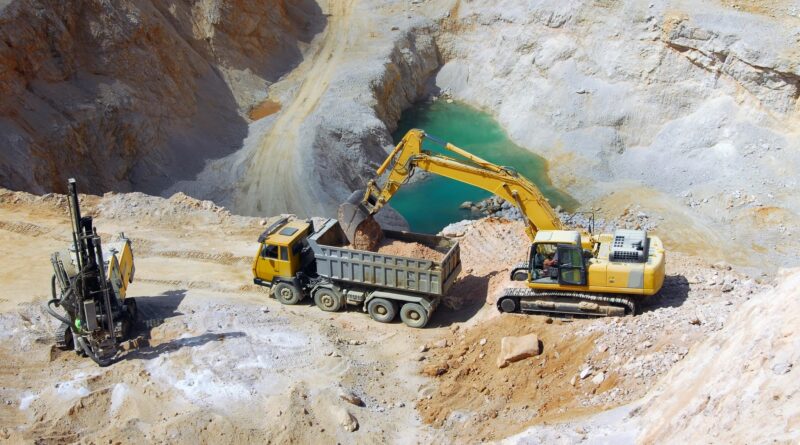Natural Resource Dependency and the Canadian Dollar
Canada is renowned for its vast abundance of natural resources, including oil, natural gas, minerals, forestry products, and agricultural commodities. The exploitation of these resources has historically played a crucial role in shaping the Canadian economy and influencing the value of the Canadian dollar, often referred to as the “loonie.” This article delves into the intricate relationship between Canada’s natural resource dependency and the fluctuations of the Canadian dollar, examining the dynamics, challenges, and implications of this complex interplay.
The Significance of Natural Resources to the Canadian Economy:
Canada’s economy is heavily reliant on the extraction, production, and export of natural resources, which contribute significantly to its GDP and employment. Key natural resource sectors in Canada include:
Energy: Canada is one of the world’s largest producers of oil and natural gas, with extensive reserves in regions such as Alberta’s oil sands and offshore drilling in Atlantic Canada and the Arctic.
Mining and Minerals: Canada is rich in minerals such as gold, copper, nickel, zinc, and potash, with mining operations spanning across various provinces and territories.
Forestry Products: Canada boasts vast expanses of forests, supporting a thriving forestry industry that produces lumber, pulp, paper, and other wood products.
Agriculture: Canada’s agricultural sector produces a diverse range of commodities, including wheat, barley, canola, soybeans, beef, pork, and dairy products.
These natural resource sectors play a crucial role in driving economic growth, generating export revenues, and supporting livelihoods across the country.
Impact of Natural Resource Prices on the Canadian Dollar:
Natural resource prices, particularly commodities such as oil, gas, metals, and agricultural products, have a significant influence on the value of the Canadian dollar. The relationship between natural resource prices and the Canadian dollar can be understood through several key mechanisms:
Commodity Currency Dynamics: The Canadian dollar is often classified as a “commodity currency” due to its correlation with commodity prices. When commodity prices rise, driven by factors such as global demand, supply disruptions, or geopolitical tensions, the Canadian dollar tends to strengthen. This is because increased revenues from commodity exports bolster Canada’s trade balance and contribute to a favorable economic outlook, supporting currency appreciation.
Terms of Trade: Fluctuations in natural resource prices impact Canada’s terms of trade, which refers to the ratio of export prices to import prices. Rising natural resource prices improve Canada’s terms of trade, leading to an increase in export revenues relative to import costs. This positive terms of trade shock can strengthen the Canadian dollar by boosting demand for the currency to purchase Canadian exports.
Investment and Capital Flows: Natural resource industries attract significant investment, both domestic and foreign, driving capital inflows into Canada. Foreign investment in Canadian resource projects and related infrastructure can lead to increased demand for the Canadian dollar, supporting its value. Conversely, downturns in natural resource prices may dampen investor sentiment and lead to capital outflows, exerting downward pressure on the currency.
Resource Dependency and Economic Vulnerability:
While Canada’s natural resource wealth contributes to economic prosperity, it also poses challenges and vulnerabilities to the Canadian economy and the Canadian dollar:
Price Volatility: Natural resource prices are subject to significant volatility due to factors such as global demand-supply dynamics, geopolitical events, technological advancements, and environmental considerations. Price fluctuations in commodities like oil and metals can introduce uncertainty and instability into the Canadian economy, impacting the value of the Canadian dollar.
Dutch Disease Phenomenon: The Dutch Disease phenomenon refers to the adverse effects of a natural resource boom on other sectors of the economy, particularly manufacturing and exports. A surge in natural resource exports can lead to currency appreciation, making other export-oriented industries less competitive in international markets. This “crowding out” effect can result in a loss of economic diversification and resilience, posing challenges for the Canadian dollar.
Environmental Considerations: The extraction and production of natural resources often entail environmental risks and sustainability challenges, including habitat destruction, water pollution, greenhouse gas emissions, and climate change impacts. Environmental concerns can lead to regulatory changes, investment uncertainties, and reputational risks, affecting the long-term viability of natural resource projects and their contribution to the Canadian economy and currency.
Policy Responses and Economic Diversification:
Recognizing the challenges associated with natural resource dependency, Canadian policymakers have implemented various strategies to mitigate risks and promote economic diversification:
Fiscal Policy: Governments use fiscal policy tools such as taxation, royalties, and investment incentives to manage natural resource revenues and support economic diversification. Revenues from natural resource extraction can be allocated to infrastructure development, education, innovation, and other sectors to promote economic resilience and reduce reliance on volatile commodity markets.
Monetary Policy: The Bank of Canada’s monetary policy decisions, including interest rate adjustments and quantitative easing measures, aim to manage inflation, support economic growth, and address currency-related challenges arising from natural resource price fluctuations. Flexible monetary policies can help cushion the impact of external shocks on the Canadian dollar and the broader economy.
Innovation and Technology: Investing in innovation, research, and technology development in non-resource sectors such as advanced manufacturing, clean technology, digital economy, and knowledge-based industries can enhance Canada’s competitiveness and reduce dependence on natural resources. Innovation-driven growth contributes to economic diversification and supports a more resilient Canadian dollar.
Environmental Stewardship: Embracing sustainable practices, environmental stewardship, and responsible resource development can address environmental concerns associated with natural resource extraction while fostering long-term economic sustainability. Policies that promote clean energy, renewable resources, and green technology innovation align with global trends towards sustainable development and can enhance Canada’s reputation and competitiveness in international markets.
The Role of International Trade and Globalization:
International trade plays a crucial role in shaping Canada’s natural resource sector and its impact on the Canadian dollar:
Export Markets: Access to international markets is essential for Canadian natural resource exports. Trade agreements, market access initiatives, and export diversification strategies facilitate the sale of Canadian commodities abroad, supporting export revenues and currency strength.
Import Dependency: Canada’s natural resource sector relies on imported inputs, machinery, equipment, and technology for extraction, production, and processing activities. Currency fluctuations can impact the cost of imports, affecting the competitiveness and profitability of natural resource industries and influencing the Canadian dollar.
Global Demand Dynamics: Global demand trends, particularly from emerging economies such as China and India, influence the demand for Canadian natural resources and their impact on the Canadian dollar. Shifts in global economic growth, trade patterns, and geopolitical developments can affect commodity prices and trade flows, shaping the Canadian dollar’s valuation.

Canada’s natural resource dependency is deeply intertwined with the value, volatility, and resilience of the Canadian dollar. While natural resources contribute significantly to economic growth, export revenues, and employment, they also pose challenges and vulnerabilities, including price volatility, environmental risks, and economic diversification concerns.
As Canada seeks to navigate the complexities of natural resource dependency, policymakers, businesses, and stakeholders must adopt proactive strategies to manage risks, promote sustainable resource development, and foster economic diversification. Investing in innovation, technology, environmental stewardship, and international trade partnerships can enhance Canada’s resilience and competitiveness while mitigating the impact of natural resource fluctuations on the Canadian dollar and the broader economy.



